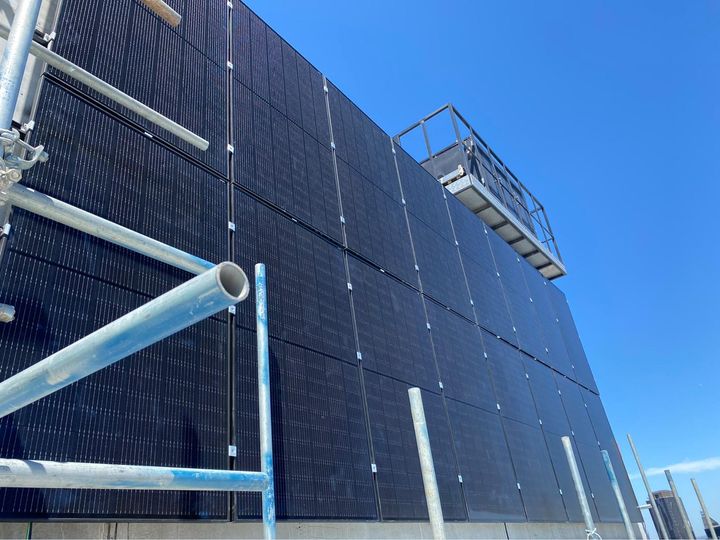The AU$200 million (US$153 million), 48-storey, mixed-use building in Melbourne’s CBD is due to be completed later this month but already Beulah is claiming the 42 kW solar PV system installed on the tower’s core walls is the largest and most efficient vertical solar facility in Australia, declaring it will outperform buildings with similar vertical solar power plants.
The installation comprises 128 Trina Solar HoneyBlack DD06M.05(II) 325 W modules. The modules have been installed on the core walls of the tower and cover 158m².
Melbourne-based essential services provider b.energy was responsible for the design and construction and operations and maintenance of the system and opted for what is labelled a ‘verticality renewables strategy,’ as a way to overcome limited space on the roof of the tower
B.Energy chairman James Dunstan said the 42kW system outperforms similar developments in terms of emission reduction, cost reduction and green energy sustainability.
“The combination of a painted lift core and stylish HoneyBlack modules has not only markedly complemented the building design aesthetics but will assist in reducing common property electricity costs,” he said.
“Whilst electricity production would generally be closer to circa 56 MWh [per year] for flat or degree-mounted systems, generating circa 30 MWh far exceeds the renewables that could otherwise be achieved on the constrained rooftop.”
While b.energy has used traditional modules for the Paragon install, the project adds weight to a report released by the Australian PV Institute (APVI) which declared the business case for building-integrated PV (BIPV) is stronger than ever, identifying it as one of five key avenues for increased market penetration of PV.
BIPV is yet to enjoy the same widespread deployment as roof-mounted solar modules that adorn more than 2.56 million homes across Australia, but the APVI believes the versatility of BIPV means it has enormous potential for growth.
The business-case recommendations are detailed in the International Energy Agency (IEA) report on BIPV which was released late last year and which highlights that “building-integrated PV offers huge potential to exploit roofs and facades as a local energy source.”
Beulah executive director Adelene Teh said the inclusion of the solar PV power plant as part of the Paragon project was important in ensuring the company continues its journey towards sustainable developments with reduced carbon footprints.
The company said the utilization of the tower’s vacant space is not only innovative but is also an attractive value-add that differentiates the tower’s embedded renewables offering which, in turn, is an enticing cost-saving to prospective residents and the developer.
This content is protected by copyright and may not be reused. If you want to cooperate with us and would like to reuse some of our content, please contact: editors@pv-magazine.com.




By submitting this form you agree to pv magazine using your data for the purposes of publishing your comment.
Your personal data will only be disclosed or otherwise transmitted to third parties for the purposes of spam filtering or if this is necessary for technical maintenance of the website. Any other transfer to third parties will not take place unless this is justified on the basis of applicable data protection regulations or if pv magazine is legally obliged to do so.
You may revoke this consent at any time with effect for the future, in which case your personal data will be deleted immediately. Otherwise, your data will be deleted if pv magazine has processed your request or the purpose of data storage is fulfilled.
Further information on data privacy can be found in our Data Protection Policy.